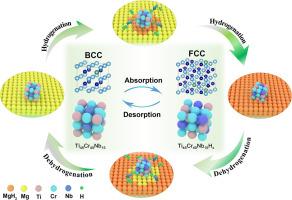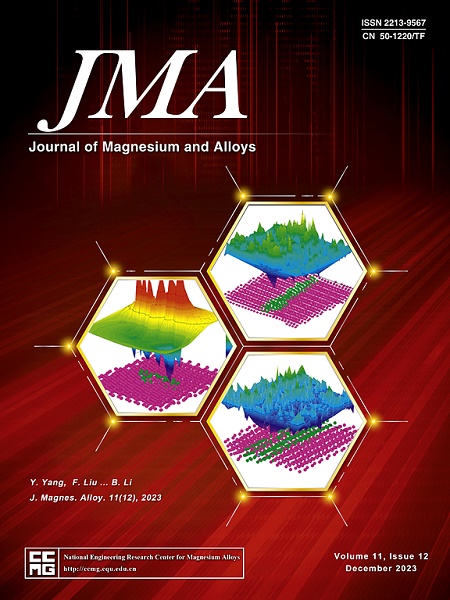TiCrNb hydride fabricated by melt spinning as the efficient catalyst for enhancing the hydrogen storage properties of MgH2
IF 15.8
1区 材料科学
Q1 METALLURGY & METALLURGICAL ENGINEERING
引用次数: 0
Abstract
Magnesium hydride (MgH2) has garnered significant attention as a promising material for high-capacity hydrogen storage. However, its commercial application remains challenging due to the high operating temperature and slow reaction kinetics. In this study, melt-spun Ti45Cr40Nb15 (with a BCC phase) hydride (designated as TiCrNbHx−MS) was synthesized and used to form a nano-multiphase composite to improve the de-/rehydrogenation properties of MgH2 through ball milling. The incorporation of TiCrNbHx−MS was shown to significantly enhance the hydrogen de-/rehydrogenation properties of MgH2. The MgH2 + 20 wt% TiCrNbHx−MS composite exhibits an appealing initial dehydrogenation temperature of 163 °C and can absorb hydrogen at room temperature. Notably, it releases 5.8 wt% hydrogen in 700 s at 230 °C and recharges 4.3 wt% hydrogen in just 2 mins at 150 °C. Even after 100 cycles, it retains a reversible hydrogen capacity of 4.98 wt%. Kinetic analysis revealed that the dehydrogenation rate follows the Chou surface penetration model. Microstructural analysis showed that the FCC phase of the melt-spun TiCrNbHx−MS hydride reversibly transformed into the BCC phase during the de-/rehydrogenation process in the composite. Numerous phase interfaces were generated and uniformly dispersed on the MgH2 surface, providing additional hydrogen diffusion pathways and heterogeneous nucleation sites for Mg/MgH2, thereby further improving the hydrogen de-/rehydrogenation kinetics of the system. This study offers valuable insights into the use of multiphase composites to enhance MgH2 performance.

求助全文
约1分钟内获得全文
求助全文
来源期刊

Journal of Magnesium and Alloys
Engineering-Mechanics of Materials
CiteScore
20.20
自引率
14.80%
发文量
52
审稿时长
59 days
期刊介绍:
The Journal of Magnesium and Alloys serves as a global platform for both theoretical and experimental studies in magnesium science and engineering. It welcomes submissions investigating various scientific and engineering factors impacting the metallurgy, processing, microstructure, properties, and applications of magnesium and alloys. The journal covers all aspects of magnesium and alloy research, including raw materials, alloy casting, extrusion and deformation, corrosion and surface treatment, joining and machining, simulation and modeling, microstructure evolution and mechanical properties, new alloy development, magnesium-based composites, bio-materials and energy materials, applications, and recycling.
文献相关原料
公司名称
产品信息
阿拉丁
Nb powders
阿拉丁
Ti (metal powders)
 求助内容:
求助内容: 应助结果提醒方式:
应助结果提醒方式:


